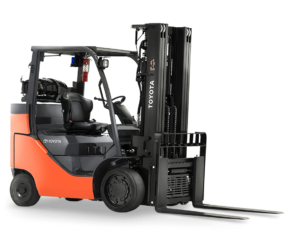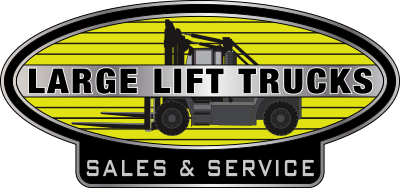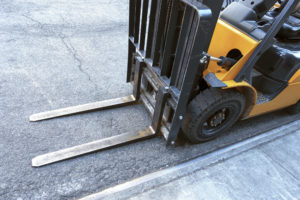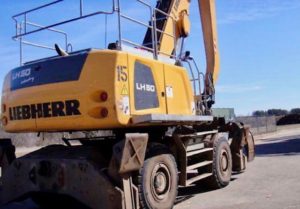Guide To Upkeep Of Forklift Chains

One of the essential moving parts of a lift truck that requires constant upkeep are the chains. The chains keep on moving each time you raise and lower the forklift mast; this can apply a lot of strain (mainly when put to use as a part of every minute of everyday activity). This blog will give an insight into old forklift chains and essential factors to notice for preventing the potential risks and hazards related to it. As the topmost provider of lift truck rental services, we will tell you the ways you can appropriately examine your chains to decide if you must change them.
Hazards of the old lift truck chains:
The vital part of forklift chains are the pins that join the links together for making the full chain length. The pins grasp the entire weight of the loads you move by lift truck. After a specific time, because of the tremendous pressure applied to the pins and chain, they start damaging. Because of this extreme operational utilization there is a possibility inaccurately kept up chains can malfunction (snap/break). When the chain starts malfunctioning, then all the people standing nearby are in danger of grave injury or also the demise. It is all contingent upon the size of the load being carried. Another significant damage related to breakage of forklift chain is to stock or property. We offer top brands of new and used forklift for sale that you can select as per your requirement and budget.
5 Indications you must change your lift truck chains:
#1 If you notice that the pins of the chains are turned:
Without the appropriate greasing, pins inside a forklift chain can go out of place. Eventually, the integrity of chains are put in danger. It is crucial to grease the chains consistently by using proper lubricant adequately.
#2 If you notice a crack in plates then you must replace forklift chains:
Different problems lead to crack in plates, such as corrosion, stretch, overloading of the lift truck and other environment-related factors. You must avoid using the lift truck once you detect cracks in it and replace the chains.
#3 If you observe any broken links in the forklift chain:
Dropping the load or functioning the lift truck on rough terrain can lead to breaks in connection of forklift chains. Any chain with the incomplete or entirely broken links must be replaced as soon as possible.
#4 If you notice any misalignment in the chains of lift truck:
Expanded holes on the exterior surface of lift truck plates or damaged heads of pins that grasp the plates together are an indication of chain misalignment. Constant functioning of a misaligned chain leads to damage of both sheaves and the chains. Eventually, chains begin to malfunction over a period of time.
#5 If you notice any rust or erosion in forklift chains:
Another factor that leads to wear and tear of chains is the rust which arises in it after prolonged usage. It is highly recommended to replace corroded chains to ensure smooth-functioning of the lift truck.
Wrapping Up:
So, factors as mentioned above, are essential to consider for the upkeep of your forklift chains appropriately. If you are looking forward to buying the new lift truck, then feel free to contact us, and we will assist you further in selecting the right forklift as per your needs and requirement.
Common Questions About Upkeep of Forklift Chains
1. How often should forklift chains be inspected?
You should inspect the forklift chains once a week. Regular maintenance plays a vital role in enhancing the reliability and functionality of the forklift chain.
2. What are some things to look for while inspecting the forklift chain?
Pay attention to broken plates, cracked chain leaves, corrosion, and lubrication levels while inspecting the forklift chain. When unsure about the chain’s elongation, use a chain wear gauge. This will help you determine the maximum elongation so you can replace the chain accordingly.
3. What are some things to remember while conducting daily forklift chain maintenance checks?
While conducting forklift chain maintenance checks, the first thing you should do is ensure that the forklift is parked on a leveled surface. This is important as a leveled surface will allow you to visually inspect the chain for corrosion, wear, elongation, or other damage easily.
Another important thing to remember while conducting your maintenance check is to check the chain tension. This ensures safety and efficiency, as a tight or loose chain can cause accidents.
Lastly, you must ensure that the chain is well-lubricated.
4. What are the safety precautions to keep in mind while upkeeping forklift chains and forklifts?
Mentioned here are some important steps the operator and maintenance personnel should follow while upkeeping forklift chains:
- Put on the proper safety equipment, such as gloves, helmets, goggles, etc.
- Park the forklift on a level and smooth surface.
- Record every inspection properly for future reference and report to superiors.
- Deactivate the forklift’s engine and apply the parking brakes.
5. Why and how should lubrication be applied to forklift chains?
It is important to oil forklift chains for effective operation and decreased friction and wear. You should use the lube the forklift’s manufacturer suggests.
The forklift chain should be lubricated after each use or while in motion. However, avoid over-lubricating the chain as it makes it prone to collect dirt and dust.
6. Do operators and maintenance personnel require training for the upkeep of forklift chains?
No, operators or maintenance personnel do not require training for the upkeep of forklift chains. However, in case of any doubts, they should reach out to their superiors.
7. How much does a forklift chain cost?
The price of a forklift chain varies between $50 – $300. This price depends on various factors like the size of the forklift, type of forklift, manufacturer, quality of the chain, location of purchase, etc.
8. What is the best way to clean forklift chains?
The best way to clean forklift chains is by using wired brushes as they remove the loose dirt and debris. Post-brushing, you can use water to rinse off the remaining dirt and dust. However, to prevent rusting, remember to dry the chain properly.






